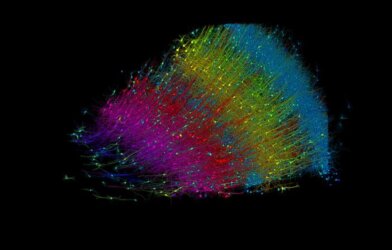The body’s internal “clock,” known as the circadian rhythm, regulates important cycles in the human body, including sleep and arousal times and health-related functions. Diseases such as Alzheimer’s, diabetes, and cancer have spurred scientists to look into the mechanism by which these clocks tick.
According to a new study, the body’s circadian rhythm may be regulated at the molecular level. Until recently, “clock genes” have been the primary scope of research within the circadian rhythm. These genes code for specific proteins that regulate the behavior of the body, as well as physiology.
Research shows a layer of nucleotides that do not code for proteins. Referred to as microRNAs (miRNAs), they are found within the entire genome and are responsible for regulating the body’s circadian rhythm.
“We’ve seen how the function of these clock genes is really important in many different diseases. However, we were blind to a whole different, funky kind of genes network that also is important for circadian regulation and this is the whole crazy world of what we call non-coding microRNA,” says Steve Kay, a professor of neurology, biomedical engineering, and quantitative computational biology at the Keck School of Medicine of USC, in a statement.
This “junk DNA” affects the expression of certain genes by blocking the production of proteins from messenger RNA. Although their role is known, the specific miRNAs at work were yet to be discovered.
The team worked with the Genomics Institute of the Novartis Research Foundation (GNF) in San Diego and was led by research associate Lili Zhou, of the Keck School’s Department of Neurology. Zhou and the team used an automated screen to allow a highly efficient robot to test the miRNAs. Nearly 1000 miRNAs were transferred into engineered cells that glowed depending on the circadian rhythm of the cell.
“The collaboration with GNF made it possible for us to conduct the first cell-based, genome-wide screening approach to systematically identify which of the hundreds of miRNAs might be the ones modulating circadian rhythms,” explains Zhou. “Much to our surprise, we discovered about 110 to 120 miRNAs that do this,” added Kay.
To demonstrate the effect of these specific miRNAs on clock rhythm, Caitlyn Miller, a biochemistry undergraduate from USC Dornsife, inactivated them. This resulted in the inability of the cell to glow, indicating a change in the circadian rhythm of the cell.
To analyze the behavioral and physiological effect of the miRNAs, mice with a specific group of miRNAs – miR 183/96/182 – were studied. This cluster was inactivated which interfered with the normal night and day activities. The affected mice did not run on the wheel at night, as opposed to the control group.
Researchers then studied the effects of miRNAs on lung and brain tissue and the retina. Results showed that inactivating the miRNA group affected clock rhythms differently in each type of tissue. This indicates that the regulation of the circadian rhythm by miRNAs is specific to the type of tissue.
The study of tissue-specific functions of miRNAs could help researchers find better methods of disease treatment. “In the brain, we’re interested in connecting the clock to diseases like Alzheimer’s, in the lung we’re interested in connecting the clock to diseases like asthma. The next step is for us to model disease states in animals and cells and look at how these microRNAs are functioning in those disease states,” said Kay.
Findings are published in the Journal Proceedings of the National Academy of Sciences.












